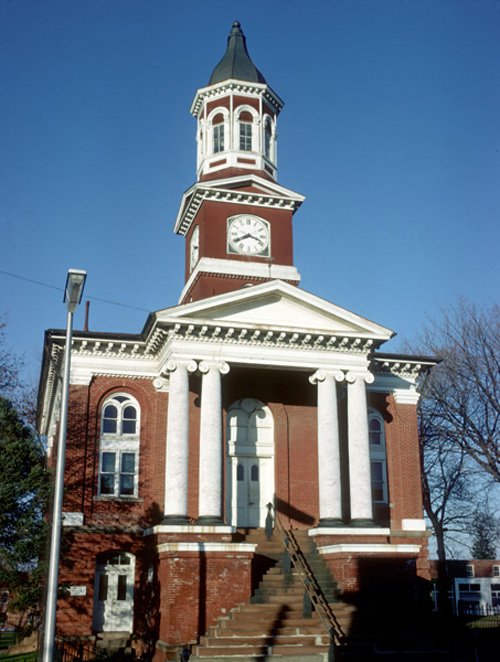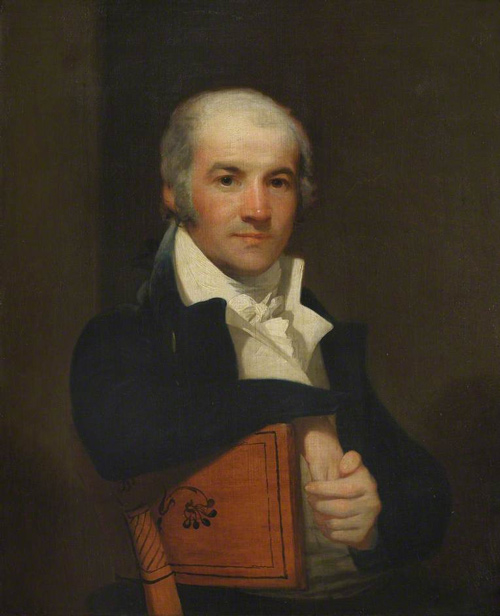In a letter to his superior, British Ambassador Edward Thornton explains why he issued a British passport to Meriwether Lewis. Leaving the intrigues of Washington City behind, Thomas Jefferson reaches Culpeper, Virginia enroute to Monticello.
Edward Thornton (1766–1852)
by Gilbert Stuart c. 1799
Oil on canvas, height: 73.6 cm (28.9 in); width: 61 cm (24 in). Source: americangallery.wordpress.com/2014/03/14/gilbert-stuart-1755-1928-2/
Among his many accomplishments, Edward Thornton served as the English ambassador to the United States between 1800 and 1804.
Thornton’s Recapitulation
On this day, the British Ambassador writes to Lord Hawkesbury to explain why he has issued a British passport to Meriwether Lewis.
Philadelphia 9th March 1803.
My Lord,
One of the two Acts of Congress, passed in secret sessions of the two Houses, and discussed with closed doors, relates to the encouragement and extensions of the external commerce of the United States, and appropriates the sum of two thousand five hundred dollars for that purpose; and it requires some explanation to make Your Lordship aware of the necessity of secrecy on a subject . . . .
he [Jefferson] is ambitious in his character of a man of letters and of science, of distinguishing his Presidency by a discovery, now the only one left to his enterprize—the Northern Communication having been so ably explored and ascertained by Sir Alexander Mackenzie’s journeys.
. . . . .
He assured me that it was in no shape his wish to encourage commerce with a distant or indeed with any Indian tribes . . . . and that Gentleman entrusted with the conduct of the business would carry no articles of commerce whatever except such as would be indispensably necessary to secure him a favourable reception and passage . . . .
. . . . .
The Gentleman he has selected for the journey is his Secretary, Captain Merriwether Lewis, a person of vigour of his age, of a hardy constitution, and already acquainted with the manners of the Indians by his residence in the Western Settlements.
Edwd. Thornton[1]“Edward Thornton to Lord Hawkesbury” in Letters of the Lewis and Clark Expedition with Related Documents: 1783-1854, 2nd ed., ed. Donald Jackson (Urbana: University of Illinois Press, … Continue reading
Culpeper Courthouse (2006)

Provided by the U.S. Department of Agriculture.
The Culpeper courthouse was a much simpler building when Jefferson saw it in March 1803. This iconic version was built in 1874.
Dinner at Culpeper
Mar 9. Fauquier C. H. barber .5 reakft. &c. 1.67.
Culpeper C. H. dinner lodgg. &c. 3.62.[2]“Memorandum Books, 1803,” Founders Online, National Archives, founders.archives.gov/documents/Jefferson/02-02-02-0013 accessed 15 May 2022. [Original source: The Papers of Thomas … Continue reading
Experience the Lewis and Clark Trail
The Lewis and Clark Trail Experience—our sister site at lewisandclark.travel—connects the world to people and places on the Lewis and Clark Trail.
Plan a trip related to March 9, 1803:

Notes
| ↑1 | “Edward Thornton to Lord Hawkesbury” in Letters of the Lewis and Clark Expedition with Related Documents: 1783-1854, 2nd ed., ed. Donald Jackson (Urbana: University of Illinois Press, 1978), 25–27. |
|---|---|
| ↑2 | “Memorandum Books, 1803,” Founders Online, National Archives, founders.archives.gov/documents/Jefferson/02-02-02-0013 accessed 15 May 2022. [Original source: The Papers of Thomas Jefferson, Second Series, Jefferson’s Memorandum Books, vol. 2, ed. James A Bear, Jr. and Lucia C. Stanton. Princeton: Princeton University Press, 1997, pp. 1089–1117.] |

